While staying at the Hyatt Place Ocean City Oceanfront, I walked down to the end of the boardwalk one night with our dog Truffles. When we reached the end I saw the Ocean City Life-Saving Station Museum which sounded interesting.
The museum is open Monday to Saturday from May through October, but only on weekends from November through April as that’s off-season for Ocean City. We were visiting in November, so one Saturday afternoon during our month-long stay Shae and I wandered down to check out the museum.

The museum has several exhibits outside which you can check out even if you don’t pay for admission. There’s a giant 2.5 ton anchor which was recovered from an 1870s shipwreck:
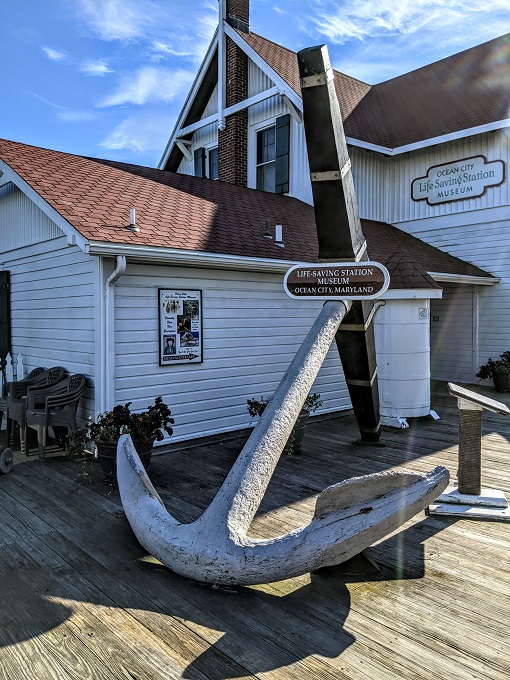
There’s a 12 pounder British manufactured cannon from around 1750. It’s thought that it was acquired by an American private armed vessel during the Revolutionary War or War of 1812.
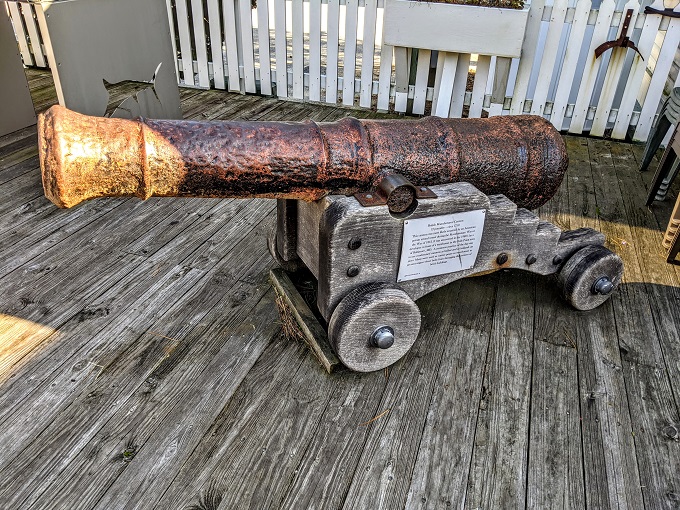
Another feature was the skin mount from a 135 lb marlin which was caught on August 29, 1980.
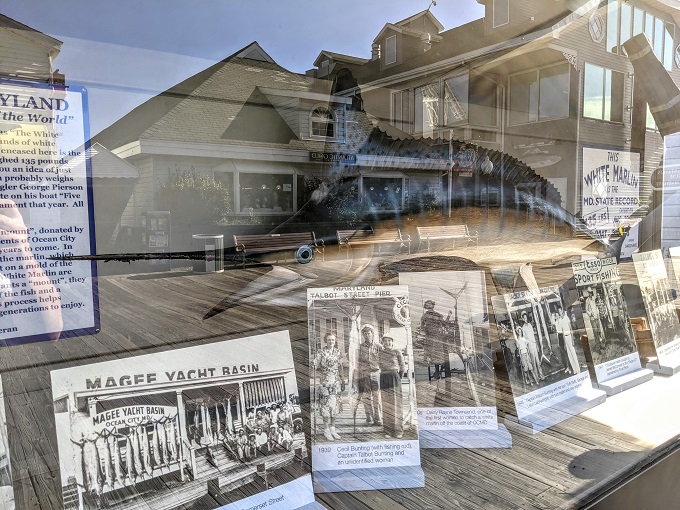
On the life-saving theme, there’s a timeline of the Ocean City Beach Patrol from 1930 through today.
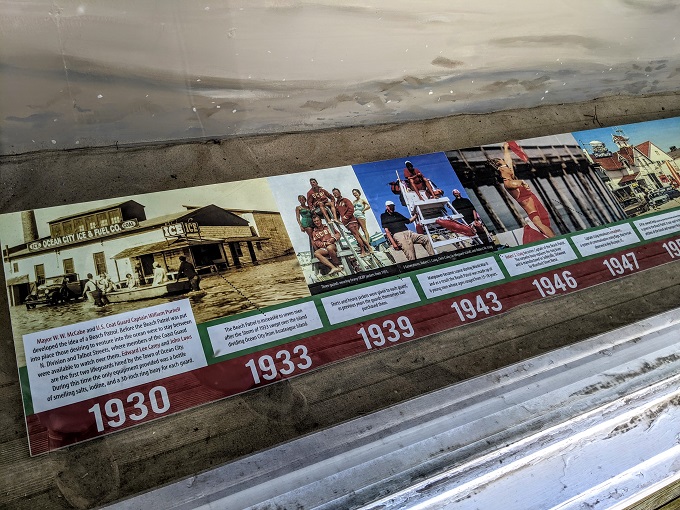
After checking out the outdoor exhibits, we headed inside and bought our tickets. The Ocean City Life-Saving Station Museum covers two floors. The first floor is all about life-saving history, particularly in the Maryland area, while the second floor is focused more on the history of Ocean City in general, but particularly the Boardwalk.

We started off on the first floor in the room which was once the Boat Room and still contains a surfboat which was manufactured in the 1930s. I can’t imagine what it would’ve been like setting out in a boat like this while a storm was raging to try and save shipwrecked sailors in the dark.
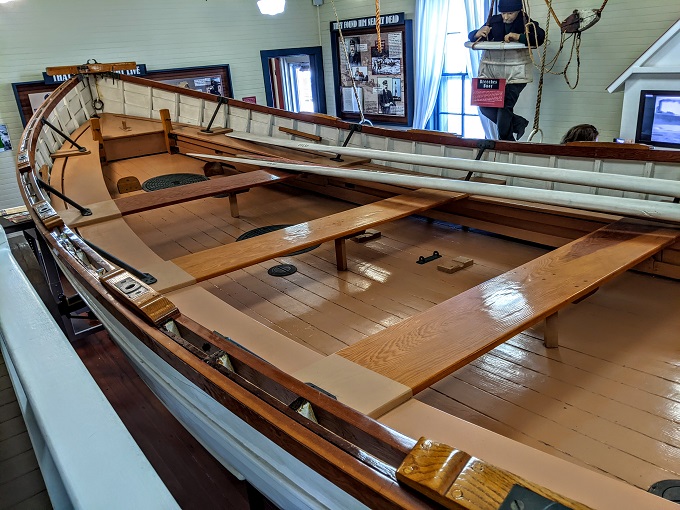
The Coast Guard had other tools at their disposal to help those who’d been shipwrecked. One of those was the life-car, a 225 lb vehicle made of galvanized steel which is in every Life-Saving Station on the east coast of the US. This would be sent over to a shipwreck and could transport back up to five people at a time inside. Those being transported could understandably get claustrophobic due to how tight it was inside.
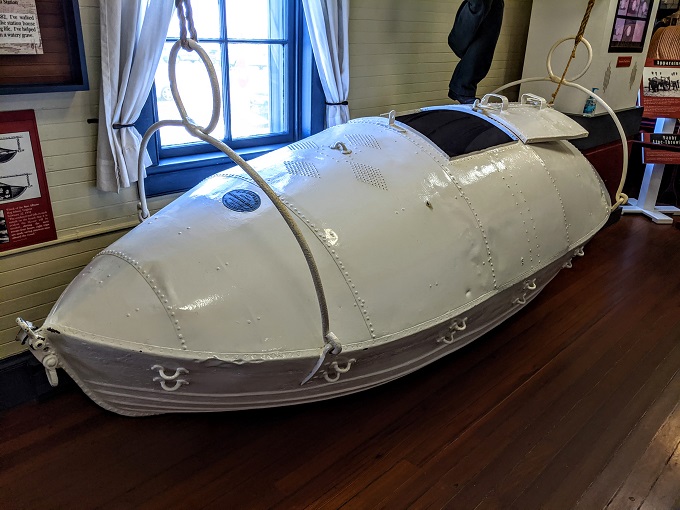
The breeches buoy was another tool used to move people from a shipwreck to the beach. A line would be fired to the ship and attached to the vessel, then the breeches buoy would be sent over. A person would get inside, then they’d be pulled to the beach by the Coast Guard.
Seeing as only one person at a time could get into the breeches buoy, saving people this way could be a time-consuming and energy-sapping operation.
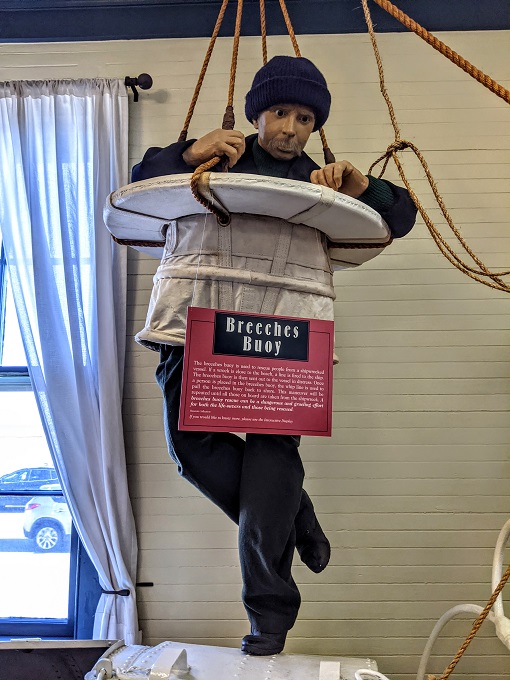
In order for equipment like the breeches buoy and life-car to be used, a line had to be fired from the beach to the ship. There were different tools used over the years to achieve that, one of which was a Manby Mortar. The one in the photo below was first used in the US on January 12, 1850 by the Volunteer Life-Saving Service at Squan Beach in New Jersey.
More than 200 lives were saved from the shipwreck Ayrshire that day thanks to the successful deployment of this particular Manby Mortar.
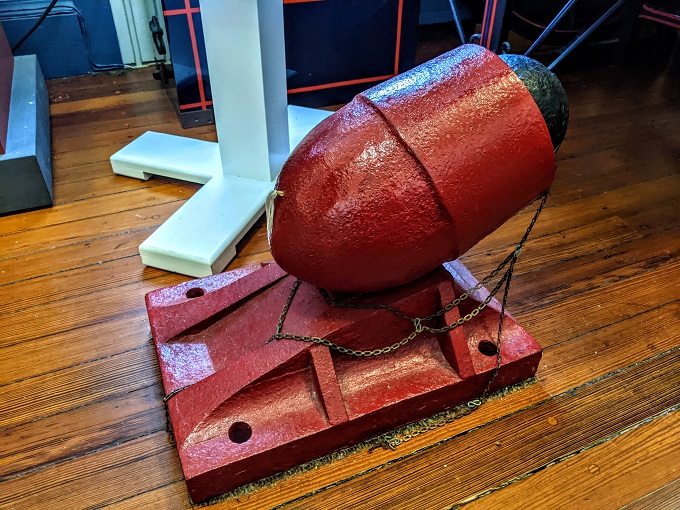
Manby Mortars were used for a couple of decades, but the Federal Government replaced them with Lyle guns in 1878 as they were more efficient and could be accurately fired up to 300 yards.
The photo below features an apparatus cart used by Life-Saving crews which includes a Lyle gun – you can see that hiding behind the wheel.
Speaking of the wheels, they were fairly wide to make it easier for them to be pulled over sand. That’s because apparatus carts had to be pulled from a Life-Saving Station to wherever a shipwreck had occurred which could, in some cases, be many miles away. Once the Life-Saving Station learned of a shipwreck, they might therefore have an exhausting journey of several miles pulling an apparatus cart along a beach even before attempting life-saving efforts.

The Lyle gun would potentially need to be fired quite some distance in order to reach a ship. That required a lengthy piece of rope, but that risked it getting tangled between uses. The faking box was used to coil the shot-line around it, then the pins could be pulled out to prevent the rope from getting snarled.
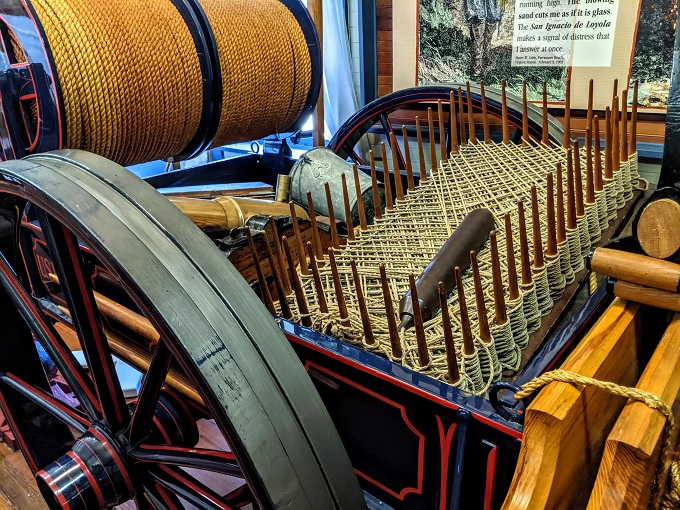
A tally-board was attached to the first line shot to a shipwreck. It contained instructions to the ship’s crew to let them know how it should be attached to the ship’s mast pole in order for the next stage of the rescue – such as the use of a breeches buoy or life-car – to proceed.
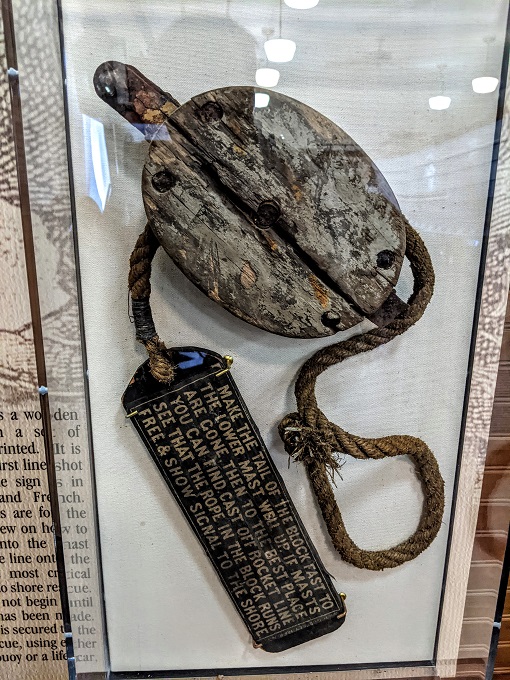
In addition to all the items on display, there were several boards providing information and stories from life-saving history.

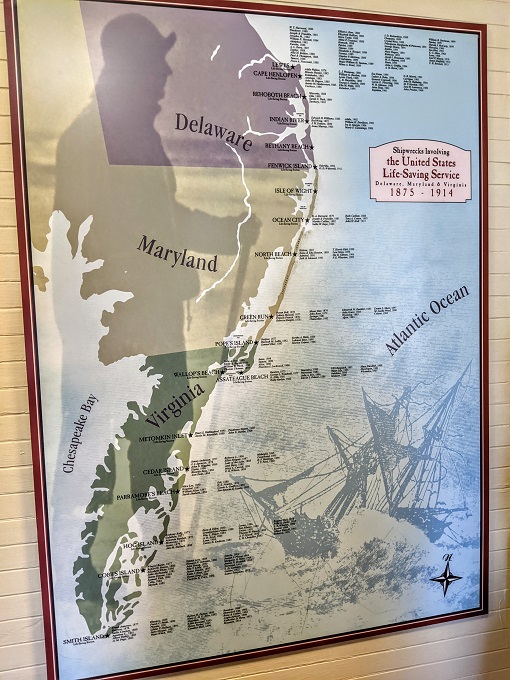

After checking out all the life-saving-related exhibits on the first floor of the Ocean City Life-Saving Station Museum, we headed upstairs to check out everything else. The second floor moves on from the life-saving theme, focusing more on the history of Ocean City. Despite not being about life-saving history, the exhibits on the second floor were all interesting in their own way.

If you’re visiting with small children, be sure to check out the Little Keepers Day Room/Play Room which is housed in what was once the Life-Saving Station’s guest room.

There are a few activities inside for children, including an interactive exhibit where they have to save a bear in a breeches buoy!
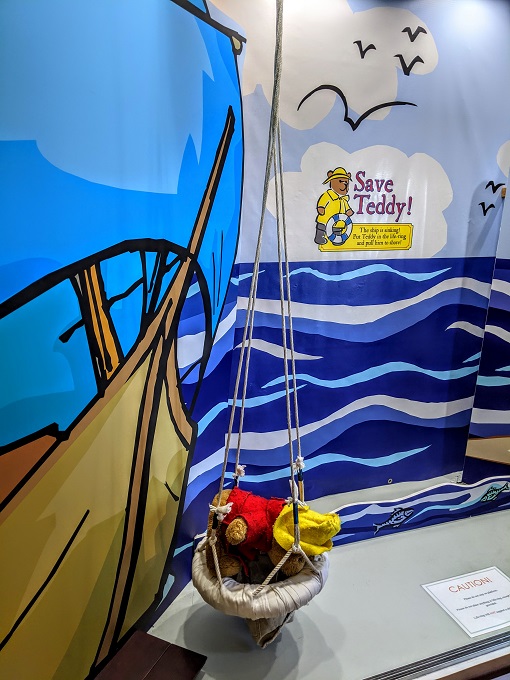
What was once the crew’s bunkroom is now the Boardwalk room which features exhibits from life over the years relating to the Ocean City Boardwalk. There was a cabinet containing souvenirs and prizes you could win from years past.
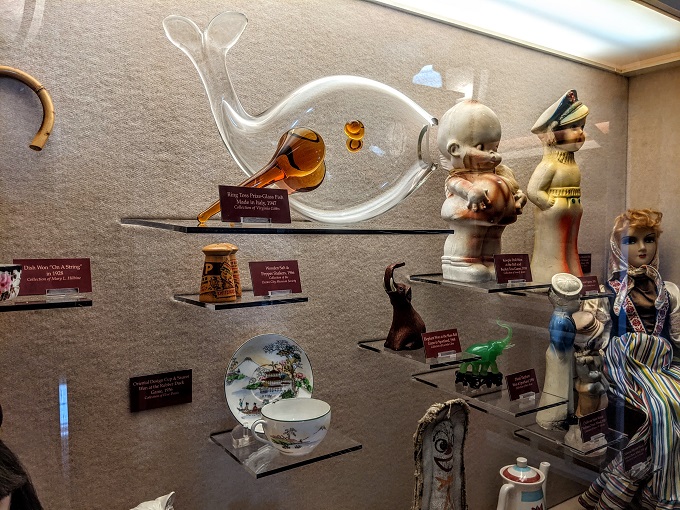
More than 100 years ago, photographer Elisha H. Hamblin ran Hamblin’s Photograph Gallery on Ocean City Boardwalk. He took portraits in his studio and turned them into postcards which people kept as mementos.
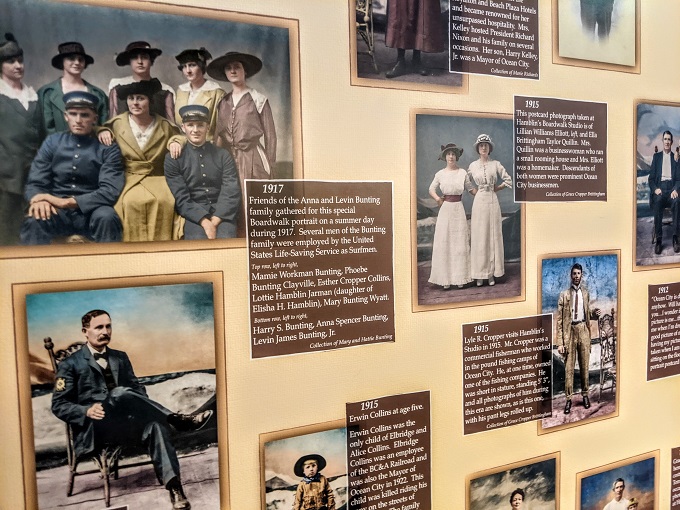
About a decade later the Photobooth machine was invented. Ocean City Boardwalk’s first Photobooth arrived in the 1930s and proved to be extremely popular, with photos captured over the course of many decades now on display in the museum.
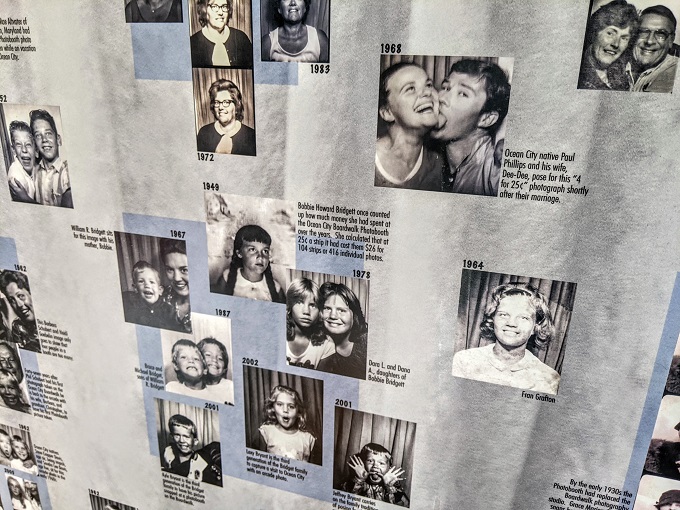
Another display had photos and information of prominent families from Ocean City over the years including hotel, restaurant and local business owners.
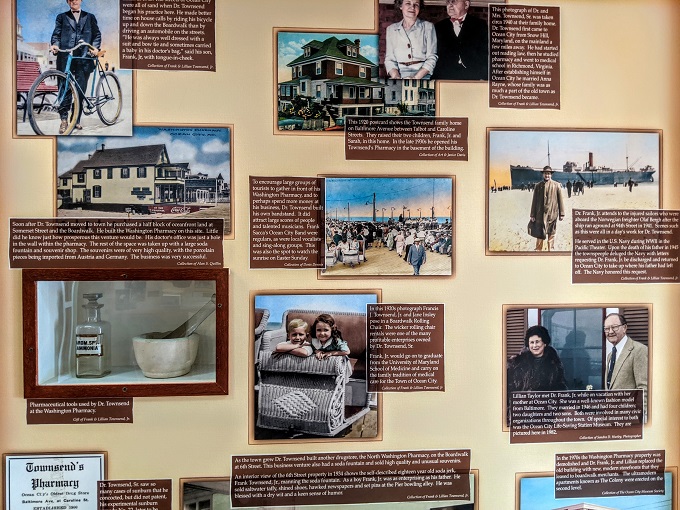
Slices of history can be fascinating, such as this 1939 lunch menu from the Commander Hotel. While it’s fun to look back at what kind of food was served and the prices charged, I’m not convinced I’d want to order cold sliced chicken loaf washed down with kraut juice and a grape nut custard pie for dessert.
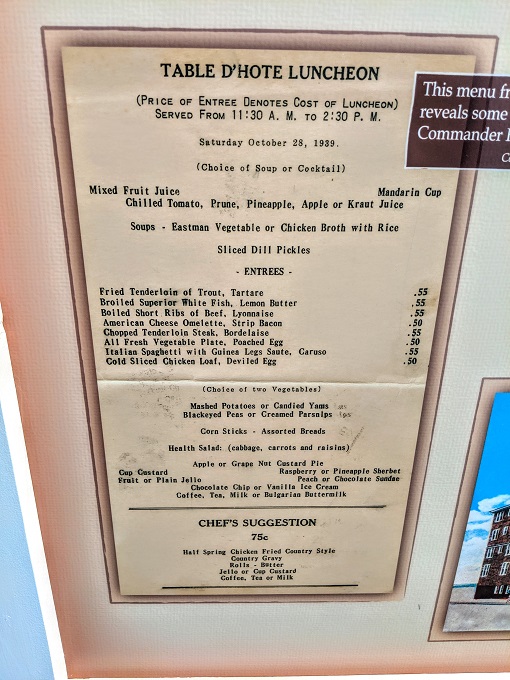
The Boardwalk in Ocean City got longer year by year as the city’s popularity grew. That made it harder for people to walk the length of it, so a couple purchased a fleet of rolling chairs and hired young, strong boys from the local area to push visitors up and down the boardwalk, with the rides costing 25c per person.
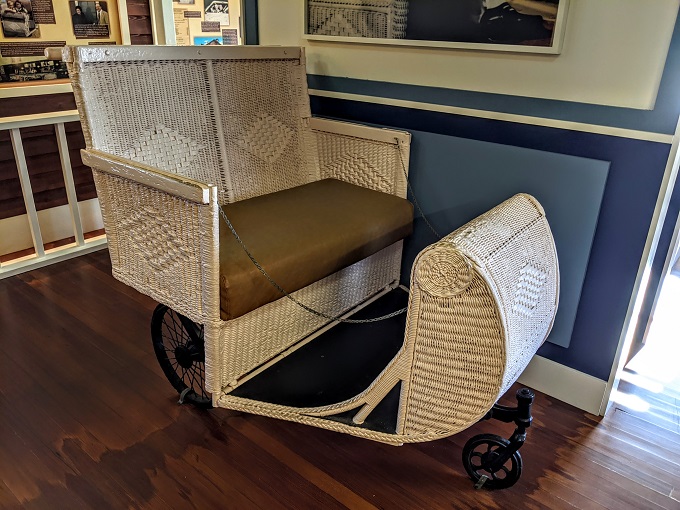
Trimper’s Amusement Park can still be found on the Boardwalk. The museum has one of the park’s original Ferris Wheel seats, although neither Shae nor I are convinced we’d have wanted to ride in one at the time.
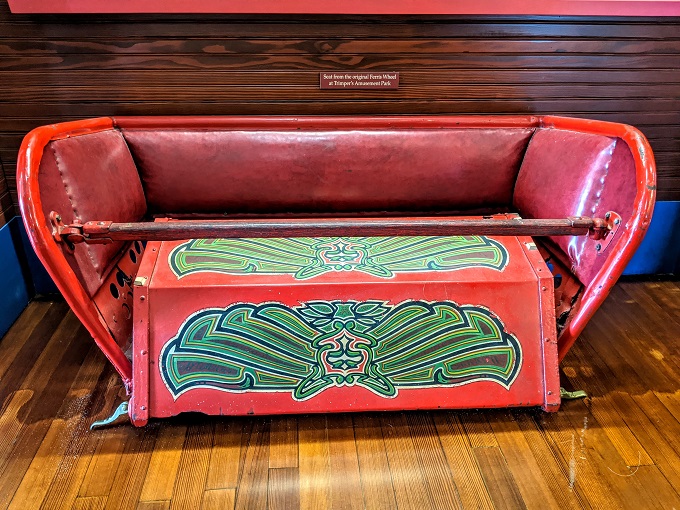
The somewhat weirdest and certainly creepiest exhibit was Laughing Sal (also known as Laffing Sal). She used to live in the Fun House on the Boardwalk and now lives in the Ocean City Life-Saving Station Museum now that the Fun House has been torn down.
You can press a button to make Laughing Sal laugh and…it’s an experience. I half expected things to turn into a horror movie, with her reaching out to grab us with her abnormally large left hand.

The Petticoat Regime exhibit in a different room featured items sharing the influence of women on Ocean City’s life over the years.
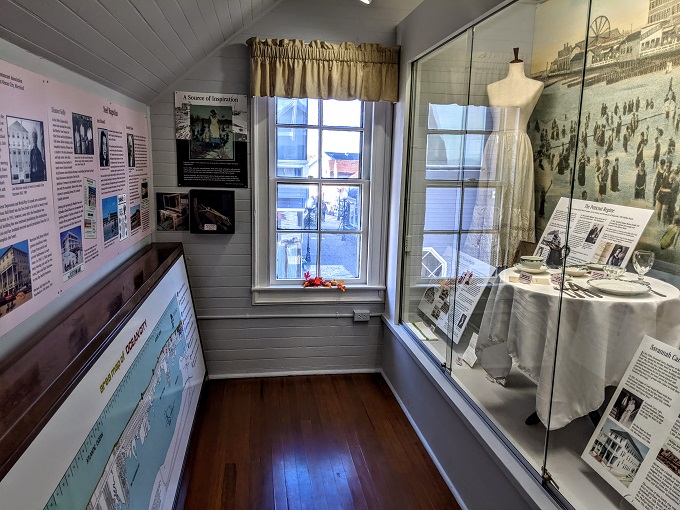
The final exhibit upstairs at the museum was Surf’s Up which, as you might guess, was all about surfing in Ocean City over the years. There was lots of information to read, along with different types of surfboards on display.
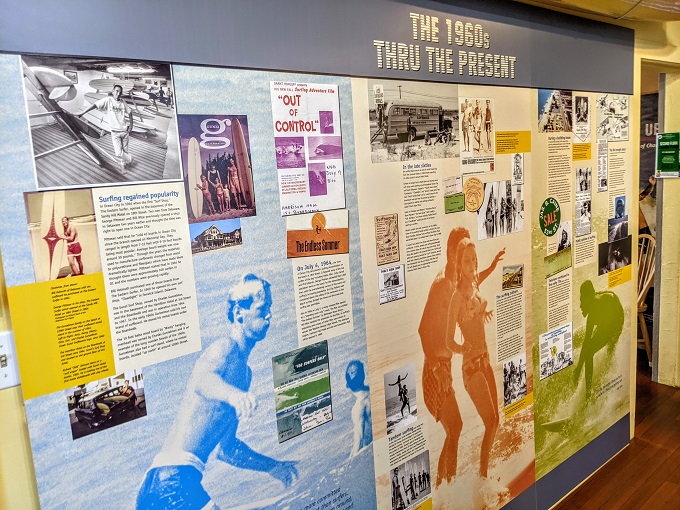

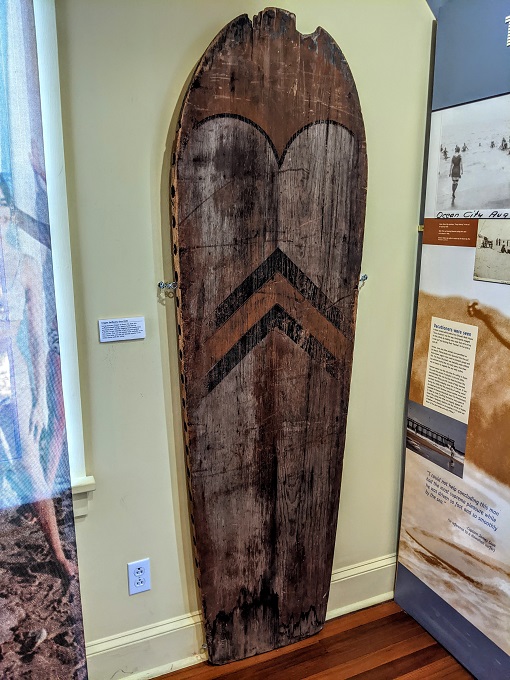
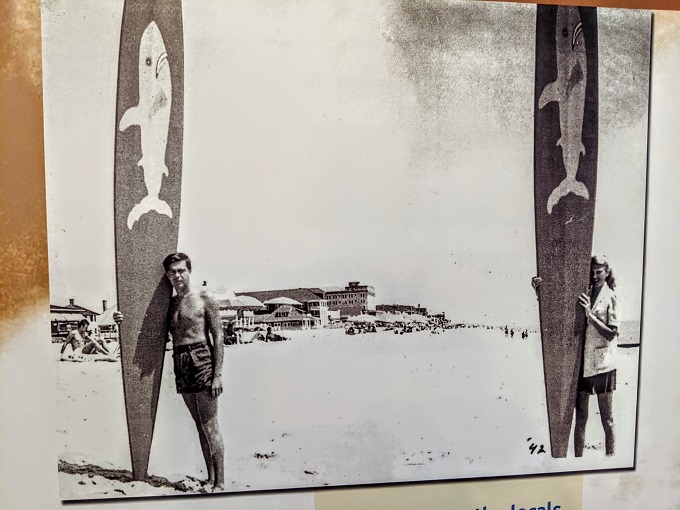
Some beaches didn’t allow surfing back in the day, so surf mats became popular as they were exempt from the rules.
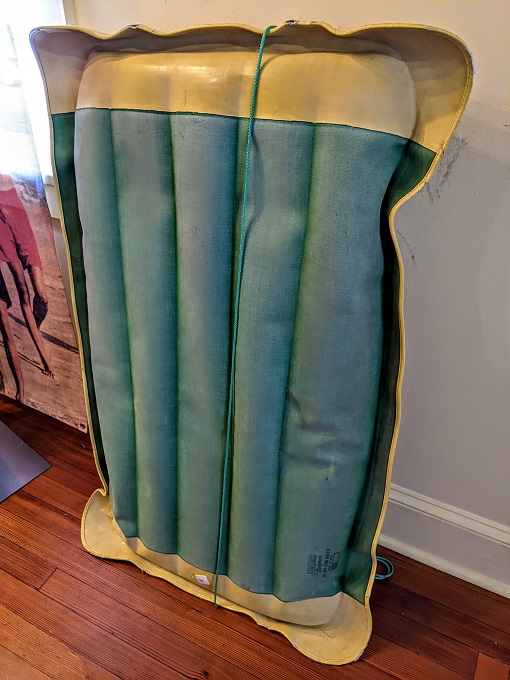
The museum’s exhibits continued back downstairs. There was a surprisingly fascinating section featuring sand from all around the world.
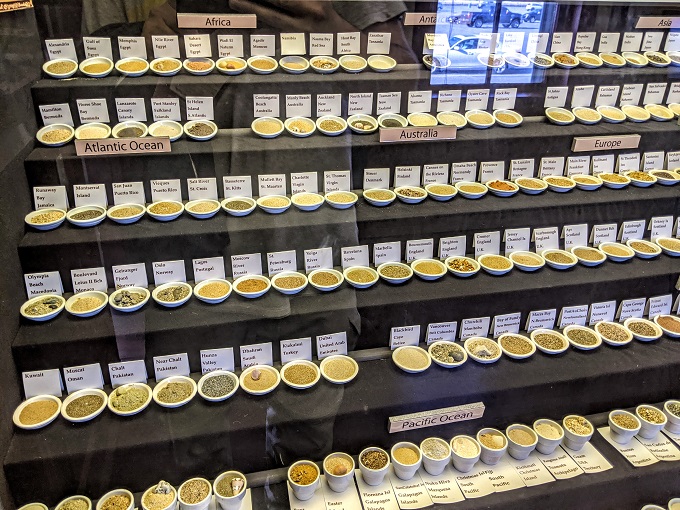
One of the types of sand was from Brighton in England where we used to live. As you can see, you wouldn’t be able to confuse Brighton beach with the Caribbean.
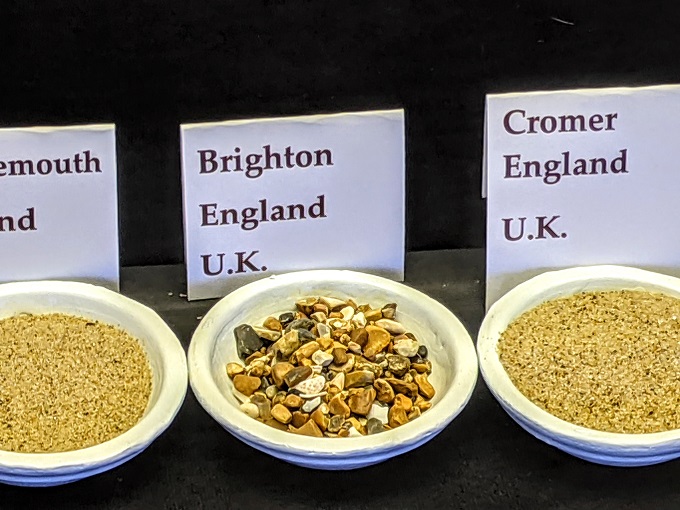
The next exhibit featured information from a couple of massive storms that happened in 1933 and 1962.
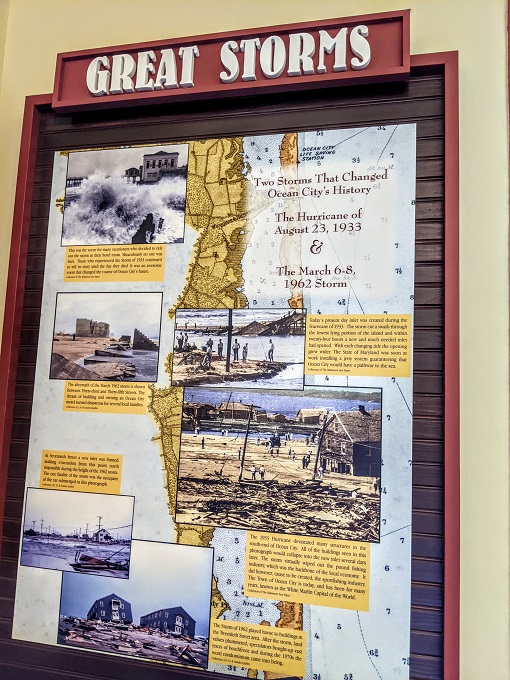


You then continue through to the aquarium which was once the Life-Saving Station’s kitchen.
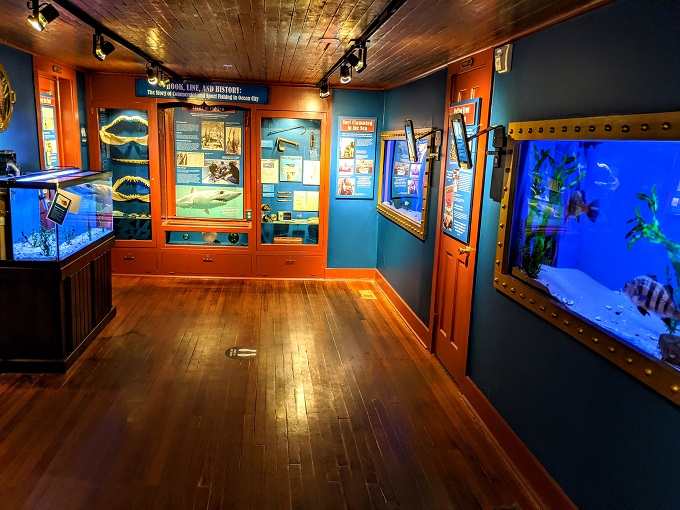
One of the tanks contained lined seahorses, one of which seemed to be incredibly attention-seeking as it kept dancing around in front of me.

It took a minute or two before I realized it wasn’t dancing for me – it was dancing for itself. The inside of the tanks are lined with reflective liner which meant we could see it, but it couldn’t see us.
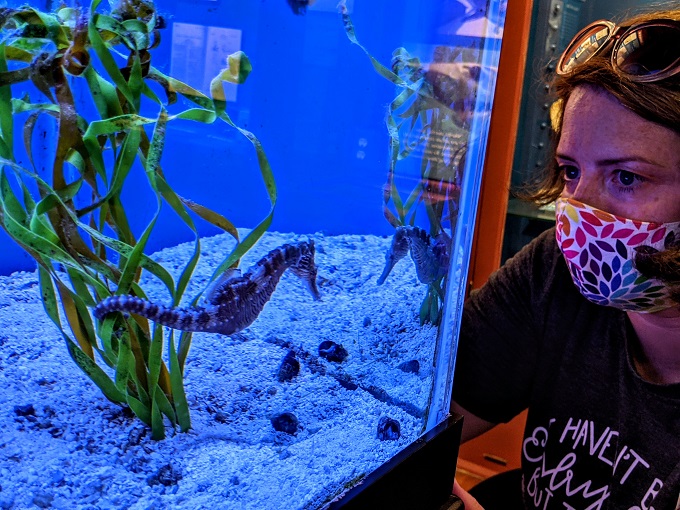
Other exhibits in the aquarium area included shark jaws and an interactive shell display.
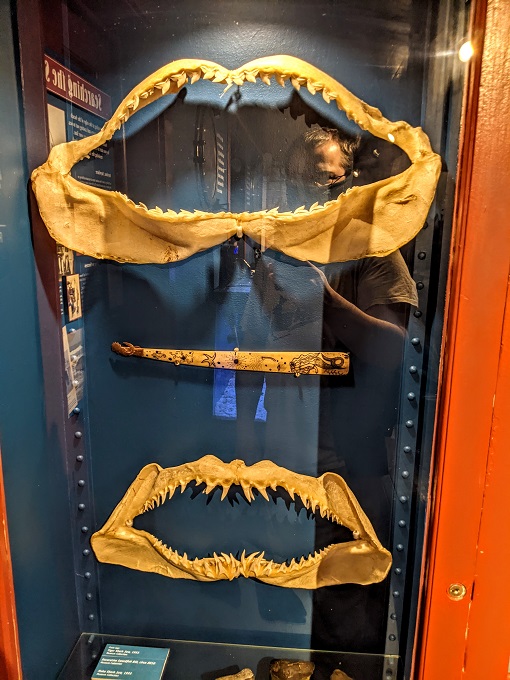

After checking out all the museum had to offer, we exited through the gift shop, stopping to chat to Robin who was working that afternoon. She was very friendly and gave a recommendation to eat at Higgins Crab Shack while in Ocean City if we wanted crab. We ate there a couple of weeks later and their food was delicious (here’s my full review), so you should trust Robin’s recommendations!
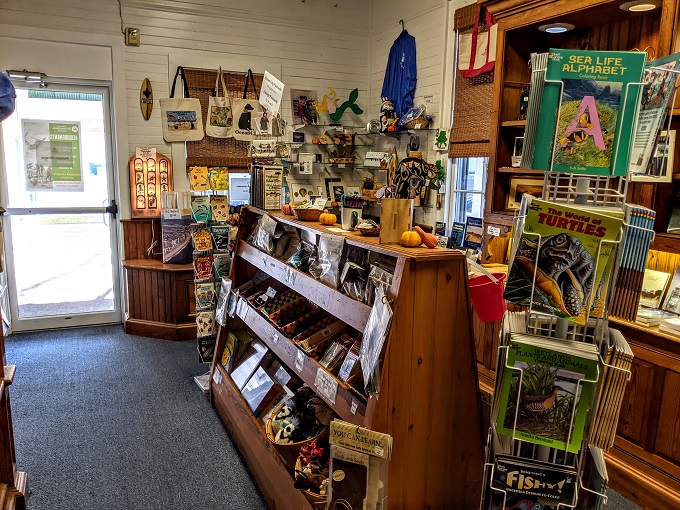
Final Thoughts
We spent just over an hour at the Ocean City Life-Saving Station Museum and had a great time. There’s lots of interesting information and exhibits about both life-saving and life in Ocean City, so it’s definitely worth checking out if you’re visiting Ocean City.
Ticket Prices
When we visited in November 2020, tickets cost $5 for adults, $3 for youth, seniors and active military and was free for children aged 11 and under.
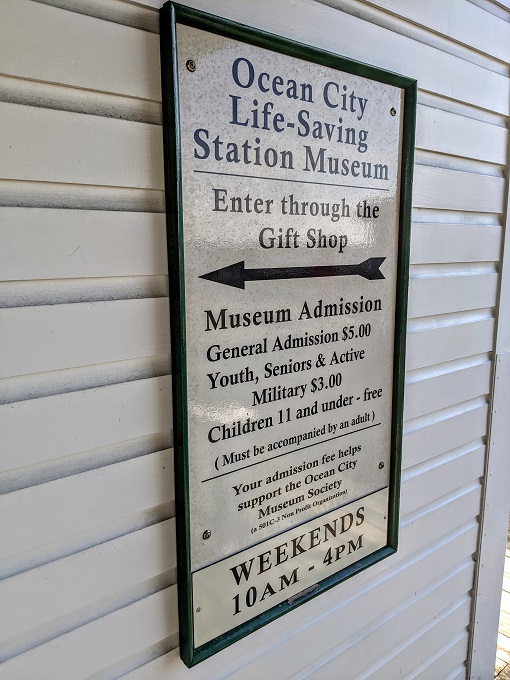
Their website had a coupon offering one free admission for every paid admission, so that could’ve saved us $5. However, $5 was a very reasonable price, so we decided to pay full price for each of us to support them seeing as it’s a small museum.
Address
Ocean City Life-Saving Station Museum, 813 S Atlantic Ave, Ocean City, MD 21842
[…] about the life-saving and early coast guard service, along with some history of Ocean City. Here’s what the museum is like and why you should check it out if visiting Ocean […]